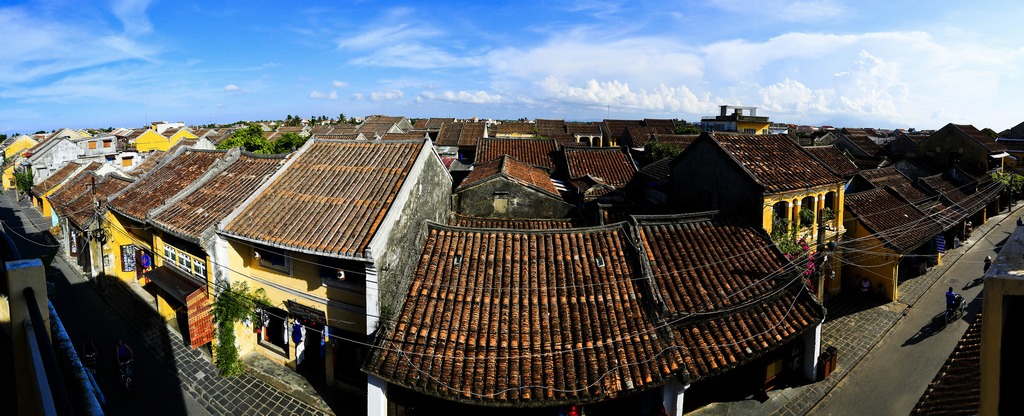Thien Mu Pagoda是越南最受尊敬和标志性的精神遗址之一。这个历史悠久的宝塔位于风景秀丽的城市,每年都吸引数百万游客,这不仅是其精神意义,而且还因为其建筑美容和文化遗产。 “ Thien Mu”这个名字转化为“天体女士”,反映了其神圣的起源及其作为越南佛教象征的地位。
在这篇全面的文章中,我们深入研究了thien Mu Pagoda的历史,建筑,精神重要性和文化意义。探索是什么使这个宝塔成为必不可少的目的地,并了解其持久的遗产,这些遗产经受住了几个世纪的变化。
Thien Mu Pagoda的悠久历史 - 从古代到现代意义
了解锡木塔的历史为越南丰富的宗教和文化进化提供了一个窗口。本节追溯了其起源,著名的历史事件及其在不同的王朝和时期中的作用。
Thien Mu Pagoda的起源和基础
这个故事始于17世纪初期,当时在nguyen Lords期间建立了Thien Mu Pagoda’ 规则。传说将其成立归因于僧侣nguyen Minh Khong,他试图创建一个可以为僧侣和外行服务服务的精神庇护所。随着时间的流逝,它成为佛教学习和崇拜的中心。
最初的结构是适度的,但是随后的翻新和扩展将其转变为当今看到的宏伟结构。它在俯瞰香水河的Ha Khe Hill上的战略位置象征着自然与灵性之间的和谐,体现了越南佛教哲学。
Thien Mu的建立与Nguyen Lords的政治稳定相吻合,允许宗教机构蓬勃发展。随着宝塔的突出增长,它吸引了学者,僧侣和朝圣者,巩固了其作为精神枢纽的位置。
重大的历史事件及其影响
在整个悠久的历史中,Thien Mu Pagoda目睹了影响越南精神和政治景观的关键时刻。在Nguyen王朝期间,它是一个有影响力的宗教中心,影响了皇家的赞助和国家对佛教的政策。
在19世纪和20世纪,宝塔在国家动荡时期发挥了至关重要的作用。它成为反殖民运动期间抵抗运动的象征,尤其是在1960年代,蒂恩·穆(Thien Mu)的僧侣积极参与了抗议倡导和平与独立性的抗议活动。
最值得注意的事件是1963年对Thich Quang duc的自我放松,这是对越南南部宗教迫害的悲惨行为。他的牺牲与Thien Mu Pagoda紧密相关,引起了国际关注,并强调了该网站的精神和政治意义。
保存和翻新
几个世纪以来,Thien Mu Pagoda面临着自然灾害,战争和现代化的威胁。尽管有这些挑战,但维护其建筑完整性的努力一直是不断的。重大翻新发生在皇帝鲍尔(Bao Dai)统治期间和越南战争之后,确保该结构仍然证明了越南工艺和宗教奉献。
如今,宝塔是联合国教科文组织认可的文化遗物,持续的修复项目旨在保护其独特的特征,同时适应当代需求。这些努力强调了保持其历史真实性的重要性,同时推广其对后代的精神信息。
文化和宗教遗产
Thien Mu Pagoda的历史与越南的精神身份深深地交织在一起。它一直是佛教教义,冥想务虚会和文化庆典等中心,例如Vesak和Tet Festivals。
Thien Mu的影响超出了宗教界限,极大地促进了越南的民族认同。它的历史韧性象征着在外部影响和内部转变中的越南文化的持久精神。
Thien Mu Pagoda的建筑奇迹 - 传统设计和精神象征主义的融合
Thien Mu Pagoda的建筑反映了几个世纪的越南手工艺,再加上精神上的象征意义。它的设计元素体现了佛教原理,自然和谐和艺术创新。
正门和门户
踏入Thien Mu Pagoda,游客受到雄伟的门户的欢迎,这些门户为未来的精神旅程定下了基调。主入口的特色是复杂的木雕刻,描绘了莲花,龙和神圣的符号。
这些门户不仅可以作为物理障碍,而且用作平凡世界和神圣空间之间的象征性阈值。他们经常装饰着书法和代表启蒙和保护邪恶的雕塑。
在建筑上,大门将传统的越南木制工艺与中国影响融合在一起,在华丽的屋顶设计和装饰托架中很明显。鲜艳的颜色和详细的主题突出了几代人传递的艺术性。
Thien Mu的塔 - 建筑图标
宝塔建筑群最引人注目的特征是七层楼的八角塔,高约21米。它被称为Phuoc Duyen Tower,是越南寺庙建筑的杰作。
塔的每个级别都象征着启蒙运动道路上的舞台,其中最上层的装有古铜色的铃铛。该塔的设计结合了象征性元素,例如莲花(纯度),龙(力量)和月亮(启蒙)。它的八角形形状代表了八倍道路的佛教概念。
塔楼用砖和木头建造,结合了结构坚固和精致的装饰。它向上的螺旋设计象征着精神上的攀登,指导从业者提高意识。
主要的冥想厅和辅助结构
中央大厅,僧侣和游客聚集在这里祈祷和冥想,展示了错综复杂的木制品,优雅的祭坛以及佛陀和菩萨的宁静雕像。内部强调简单性和和谐,促进了有利于精神反思的宁静环境。
周围的结构包括僧侣的居住区,佛塔花园,其中包含尊敬的僧侣的遗物,以及专门针对特定神灵或佛教教义的辅助大厅。这些建筑物反映了与自然的和谐融合,通常以郁郁葱葱的花园,池塘和宝塔为特色,可以增强精神氛围。
艺术元素和装饰
Thien Mu Pagoda中的装饰艺术充满象征意义。壁画描绘了佛教经文的故事,而书法则刻有墙壁和支柱上的祝福和智慧。用木材,石头和铜制成的雕像装饰着该地点,体现了精神理想和文化美学。
使用竹子,莲形灯笼和水特征等天然材料将环境融入精神体验中。这种建筑的整体方法强调了越南对自然与宇宙团结的信念。
Thien Mu Pagoda在现代越南社会和旅游业中的作用
作为一个活着的宗教机构和文化纪念碑,Thien Mu Pagoda继续影响当代越南社会。它是一种精神庇护所,旅游胜地,也是民族自豪感的象征。
精神和宗教活动
宝塔举办每日祈祷,冥想会议和佛教节日,吸引当地人和朝圣者。它的僧侣是精神向导,教育者和社区领袖,在现代化的情况下保留了传统实践。
塞氏期间的特殊仪式纪念佛陀的出生,启蒙和死亡,吸引了大批人群。在TET期间,Lunar新年,Thien Mu成为文化庆祝活动的焦点,将宗教仪式与公共庆祝活动融合在一起。
旅游和文化教育
全球游客访问Thien Mu Pagoda,欣赏其建筑,了解越南佛教,并欣赏香水河的全景。导游的旅行解释了历史,象征主义和艺术特征,从而丰富了游客对越南文化的理解。
宝塔内举办的教育计划和展览提高了人们对越南精神遗产的认识。该网站的可访问性和保留的完整性使其成为文化交流的宝贵资源。
保护挑战和未来的观点
保持旅游,宗教活动和保护之间的平衡构成了持续的挑战。过度的商业化可能威胁到其精神上的神圣性,而环境因素需要持续的保护工作。
未来的举措旨在促进可持续的旅游业,并加深对Thien Mu文化意义的理解。强调社区参与和负责任的探访可确保这种精神地标对于后代仍然充满活力和有意义。
比较表:Thien Mu Pagoda的关键特征
| 特征 | 描述 | 意义 |
|---|---|---|
| 位置 | Ha Khe Hill俯瞰香水河 | 风景优美和精神上的宁静 |
| 结构 | 七层楼八角塔,主要祈祷厅,门户 | 启蒙的建筑象征主义 |
| 年龄 | 成立于17世纪初;定期翻新 | 历史韧性和文化连续性 |
| 艺术要素 | 壁画,雕像,书法,装饰雕刻 | 体现佛教教义和越南艺术 |
| 文化角色 | 宗教习俗,节日,纪念馆 | 社区凝聚力和精神指导 |
关于Thien Mu Pagoda的常见问题解答
蒂恩·宝塔在越南有什么意义?
Thien Mu Pagoda是越南精神遗产,历史韧性和文化认同的象征,在宗教实践和民族历史中起着至关重要的作用。
Thien Mu Pagoda什么时候建造?
宝塔成立于17世纪初期的Nguyễn领主统治期间,并进行了持续的翻新,以保存其历史性结构。
访客可以参加Thien Mu Pagoda的佛教仪式吗?
是的,游客和朝圣者可以参加祈祷,冥想和节日,亲身体验精神氛围。
是什么使Thien Mu Pagoda的建筑与众不同?
传统的越南,中国和佛教设计元素,尤其是七层楼的塔楼,体现了艺术卓越和精神象征主义的结合。
thien mu宝塔如何保存在子孙后代?
正在进行的恢复项目,联合国教科文组织的认可和社区参与确保保存这种文化和宗教宝藏。
结论
Thien Mu Pagoda证明了越南丰富的精神,文化和历史上的挂毯。它的古老起源,建筑宏伟和在当代社会中的持续角色使其成为旅行者,朝圣者和历史学家的迷人目的地。作为信仰和韧性的持久象征,Thien Mu Pagoda邀请我们探索越南遗产的深度,激发了几代人的崇敬和好奇心。




